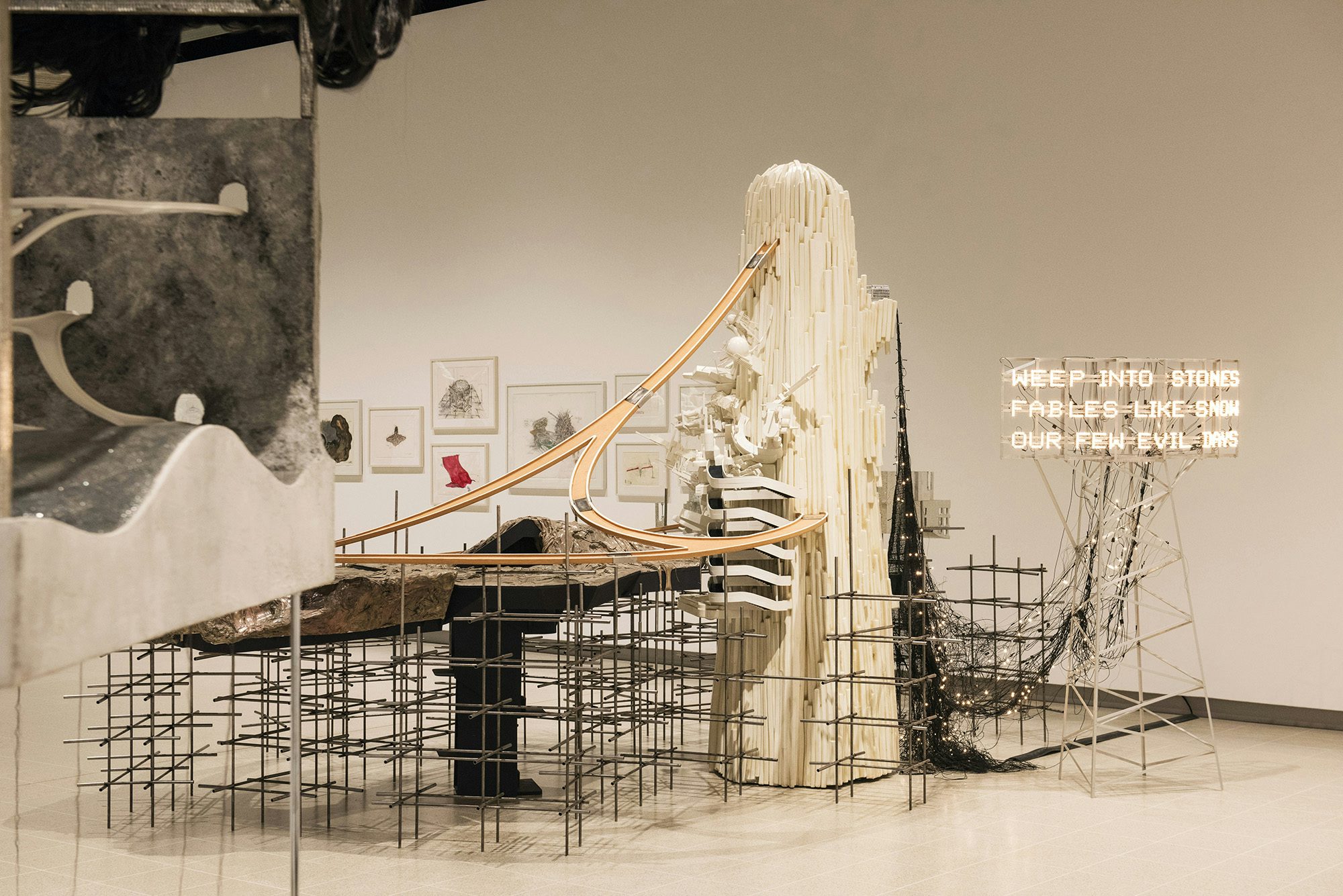Lee Bul creates a visual feast at the Hayward Gallery
Sci-fi collides with politics in Lee Bul’s epic exhibition Crashing, on show at the Hayward Gallery in London this summer
Walking into Lee Bul’s retrospective exhibition at the Hayward Gallery is akin to entering a film set. Hanging from the ceiling in the cavernous opening gallery are weird, otherworldly creatures and headless cyborgs. More monsters inhabit the floor, appearing to be waiting to scuttle forwards, their multiple limbs flailing, while in the corner lies a dazzling installation, all mirrors and lights. It is difficult to know where to look first.
If you’re a fan of the visual spectacle Bul’s work is a treat. This show covers 30 years of her art, and there’s plenty of drama here, brought to life in sculptures that combine a vivid imagination, drenched in sci-fi and the supernatural, with immaculate craft. An array of materials from silicon to neon, silk to sequins are used to create works that are part-organic, part-futuristic, and it is unsurprising to discover that Bul’s early interest as a student was in theatre: she sure knows how to put on a show.



There can be a risk that such fantastical work may lack depth, but, as two large wall displays of information demonstrate, Bul’s art is rooted in the politics of her home country, South Korea. Early performance works, displayed here on a set of TV screens, reveal her explorations with the status of women as she is shown wearing some of her elaborate ‘monster’ costumes and interacting with members of the public. Female cyborgs are also a repeated image, with Bul using the notion of the half-human, half-machine to create a series of supposedly all-powerful women.
Bul’s parents were leftist dissidents, and the emotional impact of the political upheaval in the country as she was growing up is a recurring theme. Some works refer to specific events: Heaven and Earth, a large, sinister sculpture of an oversized bathtub filled with reflective inky black water and surrounded by cracked tiles is intended to reference the torture and murder of a student protestor, Park Jong-chul, in 1987.
Other works allude to the vast modernisation projects undertaken by Park Chung-hee, President of South Korea between 1963 and 1979, which in Bul’s hands become complex, unwieldy, often nightmarish landscapes.



Perhaps inevitably though, some works do feel like style over substance. Weep into stones, a new piece created especially for the Hayward, and displayed on the outside of the gallery, is constructed with fine wire and Swarovski crystals. It is intended to ‘envelop’ the building but instead is just swallowed by it, becoming almost invisible in sunlight. Another work, featuring a vast silver balloon resembling a Hindenburg airship, also feels both literally and philosophically light.
But beyond these quibbles, Crashing contains a spectacular vision, underpinned with an uneasy, sinister tone. It’s not to be missed.
Lee Bul: Crashing is on show at the Hayward Gallery in London until August 19, southbankcentre.co.uk












